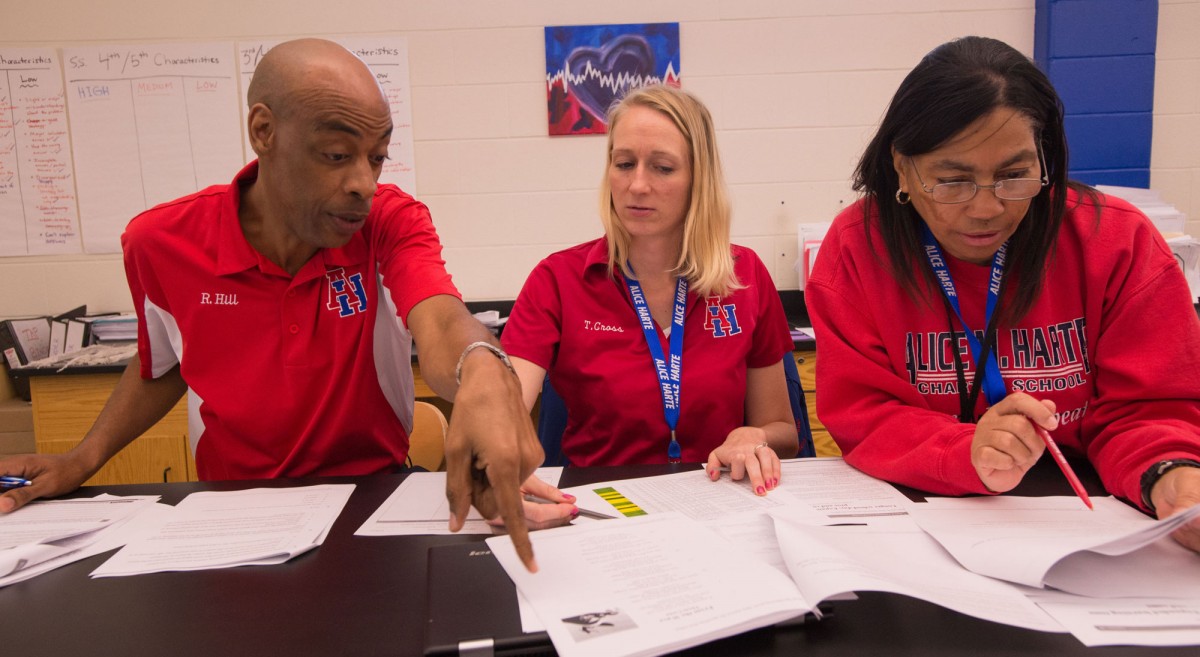New Research Underscores Need for New Models of School Leadership
April 28, 2021

By: Melissa Tooley, Director of Educator Quality for Pre-K-12, Education Policy Program, New America
Within every school trying to push through the COVID pandemic, there is one person who is ultimately responsible for orchestrating success: the school principal. Many people think of the school principal as a building leader, in charge of schedules, budgets, community and family relationships, school culture and climate, and a slew of other management tasks which have only increased during the pandemic (e.g., developing COVID safety protocols, distributing laptops and meals to students attending remotely, and much more). But principals are also increasingly expected to play another key role: as "instructional leaders" who actively guide curriculum and provide teachers and other staff with feedback and resources to improve instruction.
Being responsible for doing all of these things well makes the principals' role increasingly unsustainable, particularly since many principal preparation programs don't provide significant opportunities for candidates to practice and apply these real-world responsibilities. How can we help principals meet these demands without burning out?
Two recent reports build on New America's previous work demonstrating the need for principals to receive support from supervisors in building their instructional leadership skills, and being able to stay focused on these responsibilities by having the time, skills, and clarity of roles to delegate a core subset of responsibilities to others.
The National Institute for Excellence in Teaching (NIET)'s recent paper, The Untapped Potential of the Principal Supervisor, finds that when the principal's supervisor provides job-embedded coaching for them, it encourages the principal to create effective professional learning and coaching systems for their teachers, and ultimately advances student success. However, most principal supervisors don't engage as on-the-ground coaches for their principals, in part because their job roles haven't been defined this way.
Even when principal supervisors are modeling being a lead learner, it doesn't give principals more time in the day to complete their various responsibilities, and it's clear that they can't do it all. As schools have grown larger, and the slew of student needs schools are focused on meeting also expands, many schools have looked to expand their school leadership teams. Another Wallace-commissioned report, The Role of Assistant Principals: Evidence and Insights for Advancing School Leadership, finds that the number of assistant principal roles has increased six times as fast as principal roles over the last 25 years, with particular growth in elementary schools and schools with greater numbers of students of color. However, APs' roles and responsibilities and level of mentoring and support varies based on principals' discretion, leaving the researchers to call for more clarity and focus. The researchers also find that school leadership is "increasingly diffused to include leadership teams typically composed of assistant principals, department chairs, and other teacher leaders."
What all of this new information brings to light is the need to reconsider our current approaches to school leadership staffing. "Distributed leadership" has become an oft-used phrase within education, but most principals aren't provided with in-depth training on how to engage in this effort in a productive manner. And it's not typically a skill that is naturally gained in the years leading up to taking on a principal role either, given that most teachers work largely independently.
So what can states and districts do to shift toward more effective school leadership practices? The answer lies in creating a clear, consistent, yet customized approach to distributed leadership. Here are several recommendations for state and local education leaders to do this:
- Implement policies and practices that promote innovative distributed leadership models, such as NIET's TAP System or Public Impact's Opportunity Culture.
- Clearly and realistically define, support, and evaluate principal supervisor, principal, AND other school leader and teacher leader roles. Because schools and the students they serve in the U.S. are so varied − some rural with a few dozen students, others urban or suburban with several thousand students − it may not be possible to come up with a "one size fits all" job description for these roles, and instead responsibilities may need to be customized based on the school and district context.
- Help principals focus on high-impact uses of their time, such as coaching instructional staff, by offering training on time management and providing feedback on their allocation of time to various responsibilities. Likewise, principals should help ensure that other school leadership staff, including APs, are focused on the responsibilities most likely to promote positive and equitable student outcomes. Weighting various elements within performance evaluation systems more heavily could be another approach to demonstrating when outsized importance should be placed on particular responsibilities.
- Build a strong pipeline of novice principals by ensuring that there are roles on the school leadership team that are a clear stepping stone to the principalship, and provide mentorship in line with this expectation. Whenever possible, identified candidates should help contribute to the racial, gender, and linguistic diversity of the principalship.
These policy shifts won't be sufficient on their own − they must be accompanied by shifts in culture and communication around what it means to be a "school leader." But adopting new school leadership models is an increasingly urgent part of strengthening public education. Without a new approach to school leadership, we'll continue to struggle to attract and retain the talent necessary to secure the best possible outcomes for students.